► The VW Buggy returns
► Only this time it’s electric
► Will it make it to production?
No roof. No doors. No future? ‘Why not – these days, anything is possible,’ says Klaus Bischoff, VW chief designer and the mastermind behind this low-noise grass-hopper. ‘You see, the e-buggy concept fuses a politically correct electric drivetrain with a highly emotional bodystyle which evokes fond memories of surf, sun and sand. To me, the buggy concept is as retro as it is modern and contemporary.
What is the ID Buggy?
This is an extrovert yet 100 percent socially acceptable lifestyle vehicle for warm, sunny days. It is obviously more about open-air wafting than outright performance, it is clearly a weekend special and not a daily driver, and if it does get the nod it will be – in relative terms – about as affordable as the original beach buggy created by Bruce Meyers was back in 1964. Pondering his own words, Bischoff smiles, pauses and adds: ‘This project has the support of our chairman Herbert Diess, so it may not be just a flash in the pan…’
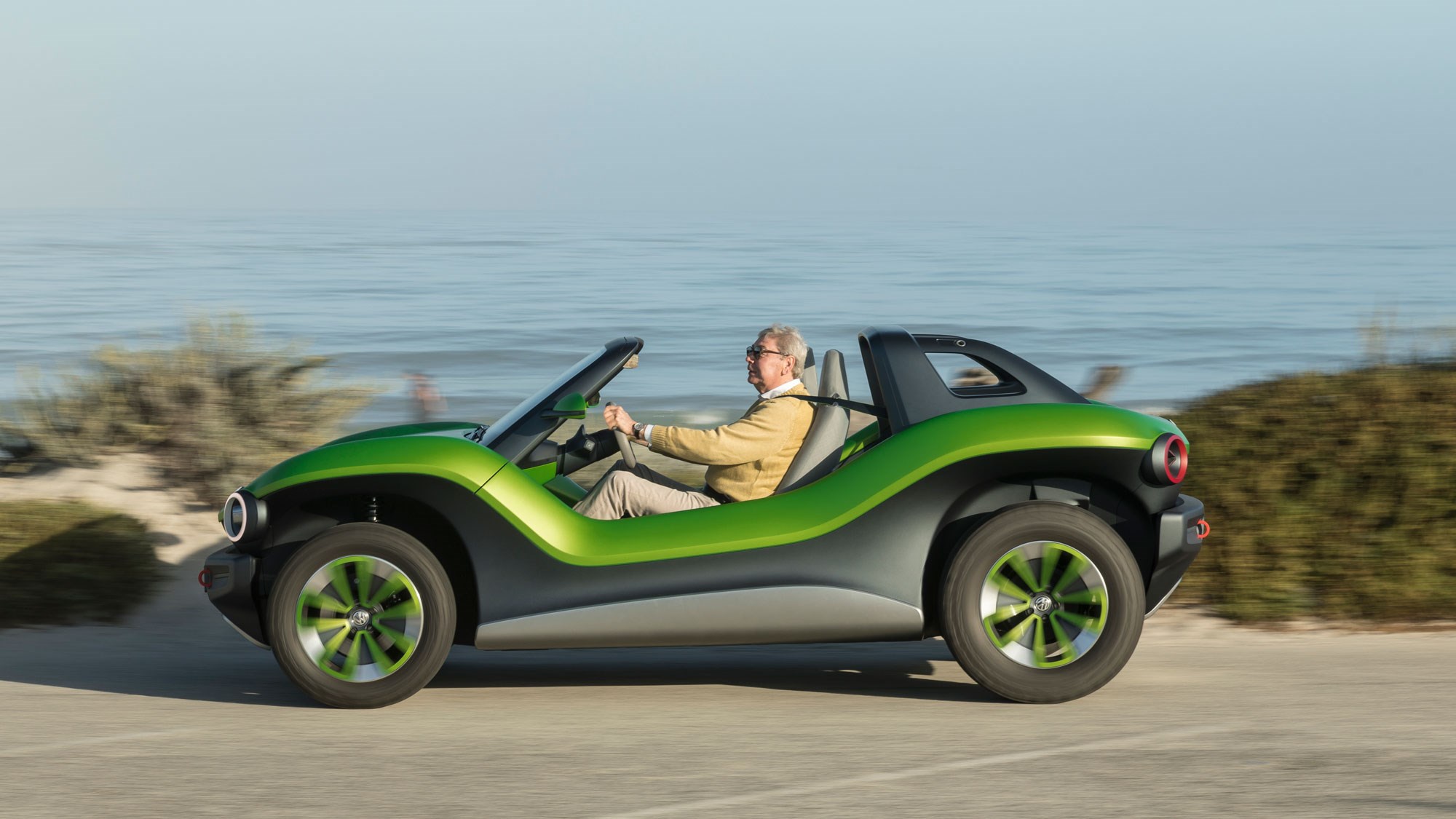
We´re on a 17mile drive which runs along the shores of the Monterey peninsula. This may be billionaires ́ turf, but on a hazy Friday morning our slow-moving greenback attracts more attention than all those rumbling Porsches, Lambos and Ferraris. Handbuilt for the Geneva Show, the concept car has since evolved into a runner, but to save batteries for a long working day the maximum speed is limited to 25mph.
Some performance specs
According to the press kit, the real thing can accelerate in 7.2sec from 0-62mph and top 99mph. Put together in VW´s own prototype shop, the ID Buggy feels as solid as a pre-production vehicle. ‘The torsional flexibility is absolutely spot-on,’ agrees a beaming Dzemal Sjenar, the engineer who oversees the development of all VW concept cars. ‘It demonstrates that this running chassis is fit to accommodate almost any bodystyle – even if lacks natural reinforcements such as a roof and two doors. Like the beach buggies of the past which were based on chopped Beetles, this platform is a perfect starting point for creative coachbuilders.’
How does it drive?
During our tour of paradise, the fern green crowd-stopper is mastering rough and smooth like a seasoned crossover vehicle – no groans, no rattles, no crackles. On sand, you can drift this rear-wheel drive toy like a go-kart. On sealed blacktop, the bespoke 18in all-terrain BF Goodrichs warrant plenty of grip and a decent ride comfort. And on the boulevard of the vanities, the e-bug keeps triggering the same questions over and over again.
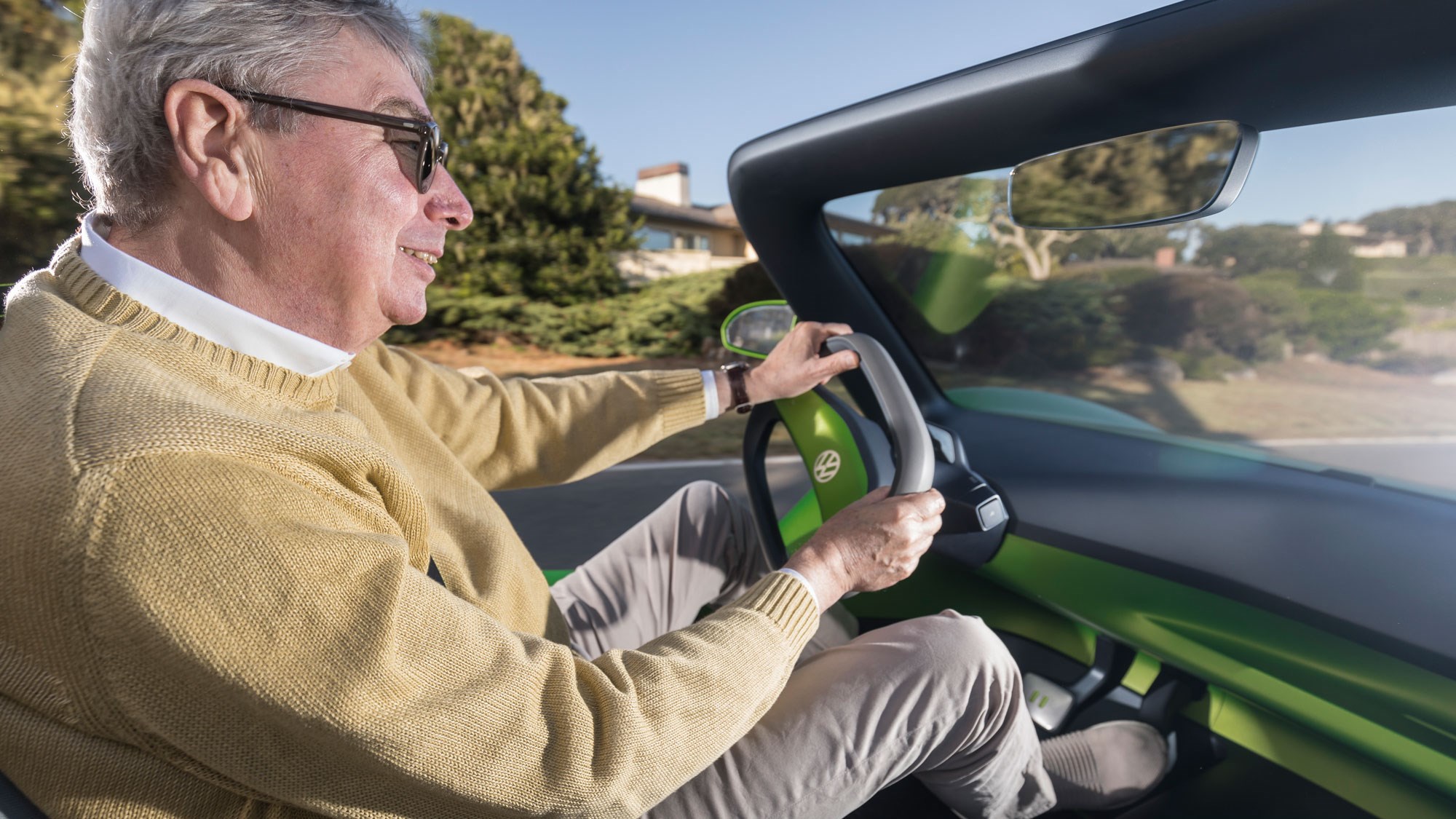
What about…
How much is it? When can I buy one? Is it really exclusively electric? What I do I do when it rains? When it rains, you get wet, period. True, there is a piece of black tarp that can be attached to the windscreen frame and the targa bar, but it is little more than a token gesture. Even though the cabin can allegedly been cleaned with a water hose, this car should swiftly seek cover in bad weather – if only to protect the cloth-lined, body-hugging and generously adjustable carbon-fibre bucket seats which come straight out of the XL1 (VW´s one-litre car) parts bin.
VW platform sharing
Tipping the scales at approximately 1500 kilos, the ID Buggy weighs 170 kilos less than the ID3. The version featured here is powered by a single rear-mounted e-motor good for 150kW/201hp and 228lb/ft of torque. The battery capacity is 62kWh, the WLTP range works out at 155 miles. That´s okay, but not quite good enough compared to the 125kW/170hp ID3 which can cover 280 miles between charges when fitted with the same battery pack. Four-wheel drive is a possible option. Rated at 70kW/95hp, the auxiliary e-motor would enhance off-road traction while shaving well over one second off the acceleration time.
Plan B also known as e-GTi features a beefed up 80kWh energy stack and a 300bhp drive unit. At this point, however, the project engineers have yet to step out of their ivory tower office and present a viable business case to the board of management. Another decider is the outcome of the first customer clinics. From what we hear, the concept was generally well received, but while some observers felt the design was a bit dull, others would have reportedly preferred a crisper, more compact package along with a more protective top.
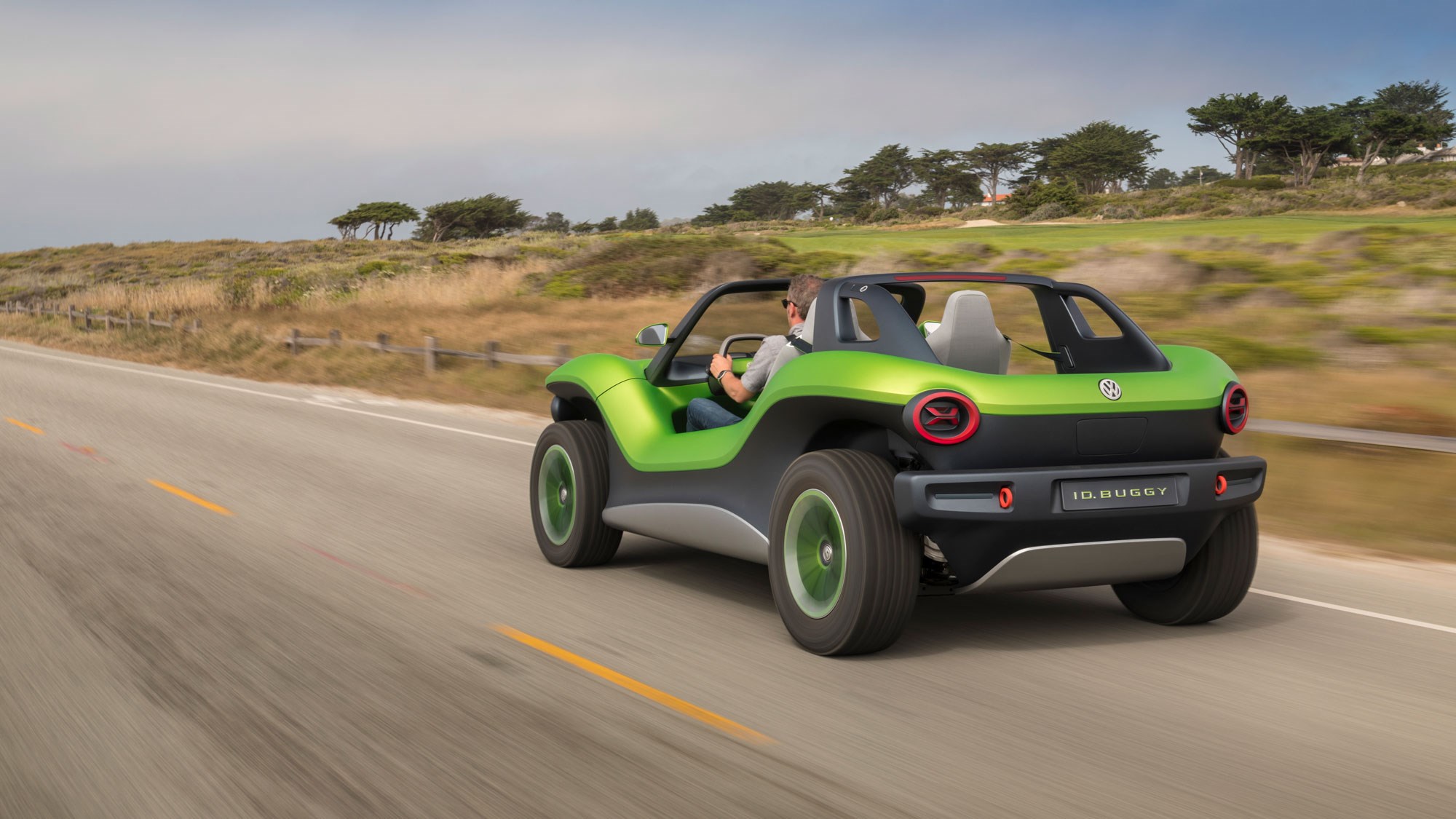
The concept car shares its 2765mm wheelbase with the five-door ID3. As a result, the two-seater is absolutely huge inside, sporting enough legroom for baseball giants along with a rear pacel shelf large enough for at least one grown up suitcase. When the wind is blowing through the cabin in east-west direction, the term crossflow adopts a whole new meaning: at low temperatures, you better don long trousers and a sweater.
On the credit side, neither the rollover protection assembly nor the relatively narrow windscreen impair visibility to an extent worth mentioning. The dashboard is minimalistic to the extreme. Straddling the column of the quartic multi-functional steering wheel is a small solitary oblong digital display which indicates speed, gear, lights on and distance to empty. That´s it. No satnav, no full-size monitor, not even a docking station for the smartphone. The gear (R-N-D) is selected by by twisting the right-hand toggle forward or back. Pushing it engages park. Its counterpart to the left double-acts as indicator and two stage light switch (DRL, main beam).
And back to the 60s…
Compared to the e-buggy, the 1967 Manxster brought along for the fun of it by Winnie and Bruce Mayers feels like a synthesis of zero SPF sunbed and vintage fitness machine. The indirect unassisted steering is as vague as a broken geiger counter, the brakes are a case of well meant but badly done, the clutch takes forever to engage, and the smokey engine keeps choking on an overly rich mixture. In the 2019 reincarnation of the great American cult car, an intelligent all-encompassing high-voltage system supports the instant-on brakes and the finger-tip easy yet power-point sharp steering.
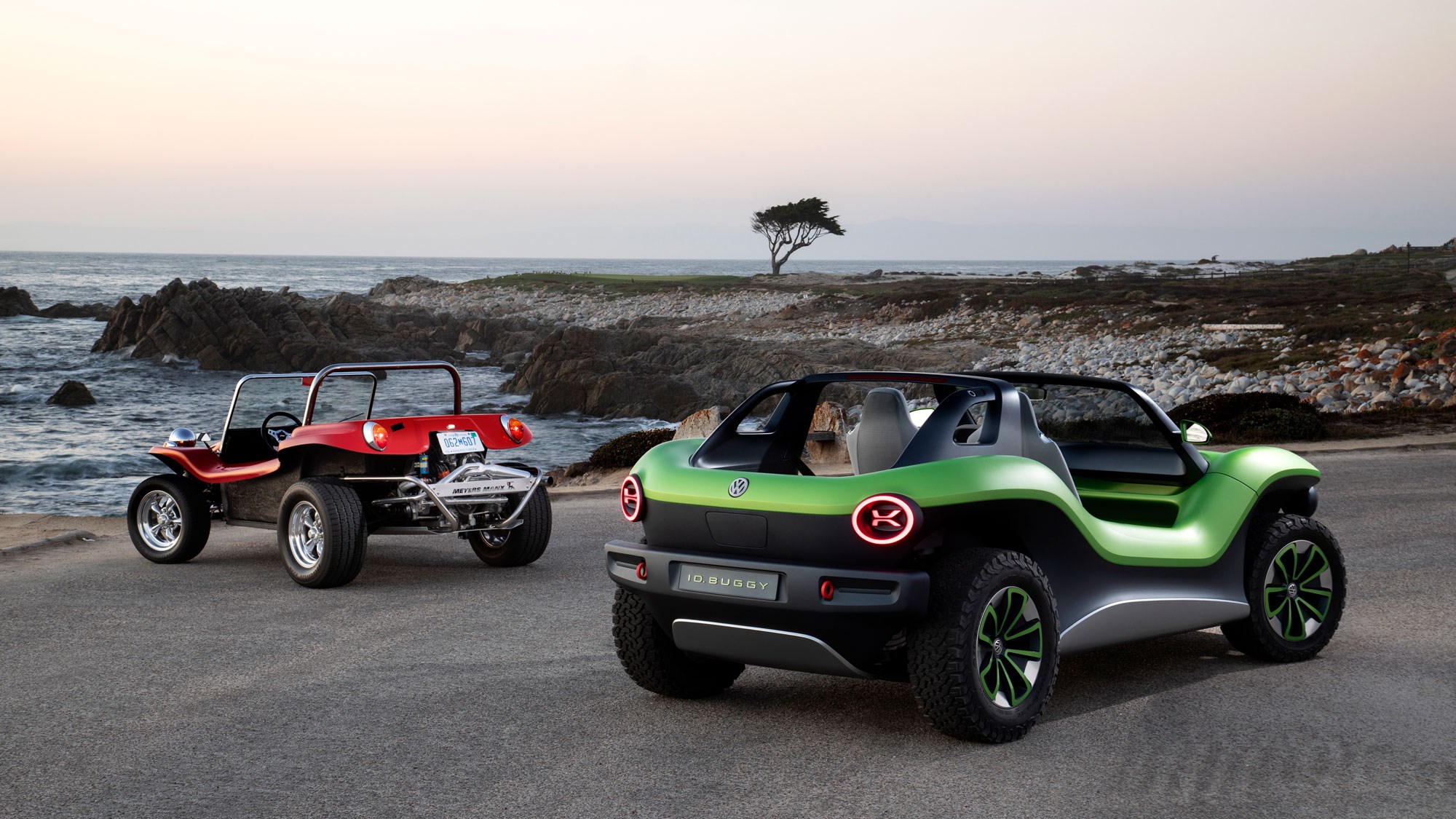
The single speed transmission makes the clutch obsolete, the jumpstart torque explosion never ceases to amaze, and rather than breathing in a cloud of unburnt five-star, the only proprietary e-buggy smell that mixes with the salty sea breeze relays an occasional whiff of electricity, Hornby model railway style. But while Bruce Meyer´s plaything can be filled to the brim in well under three minutes, the VW for tomorrow´s beach boys needs at least half an hour on a hard-to-find 100kW charger before it is ready again for the next journey.
Will it be made?
According to its maker, the ID Buggy presents an ‘opportunity for external manufacturers. It can be built by start-ups in a wide variety of versions.’ That´s an interesting statement, because right now anything is possible and nothing is fixed. One of the external manufacturers VW has in mind is Günther Schuh´s e.Go company. Soon after Herbert Diess announced that VW will make its MEB architecture available to selected third-party customers, e.Go was confirmed as the first cooperation partner. Founded in 2015, e.Go´s initial claim to fame was the electric Streetscooter panel van operated by German Mail.
In 2017, the firm announced the e.Go Life plug-in city car which trickled on sale last May priced at between 15,900 and 19,900 Euro. Since the production capacity in the Aachen factory is limited to 10,000 units a year, the e-Buggy may be too big a mouthful for an independent entrepreneur without generous corporate backing. According to Diess, “the joint vehicle project in question has yet to be defined.”
If the board does give green lights to the zero-emission Buggy, about two-and-a-half years will pass before the most extreme MEB derivative to date should be ready for job one. Since the e.Go link is still tentative, the production planners are currently also evaluating various alternative scenarios. Among them is a cooperation with Magna, VW´s Mexican assembly plant in Puebla, one of three possible joint venture factories in China, and the former Karmann works in Osnabrück, to name only the most frequently mentioned options.
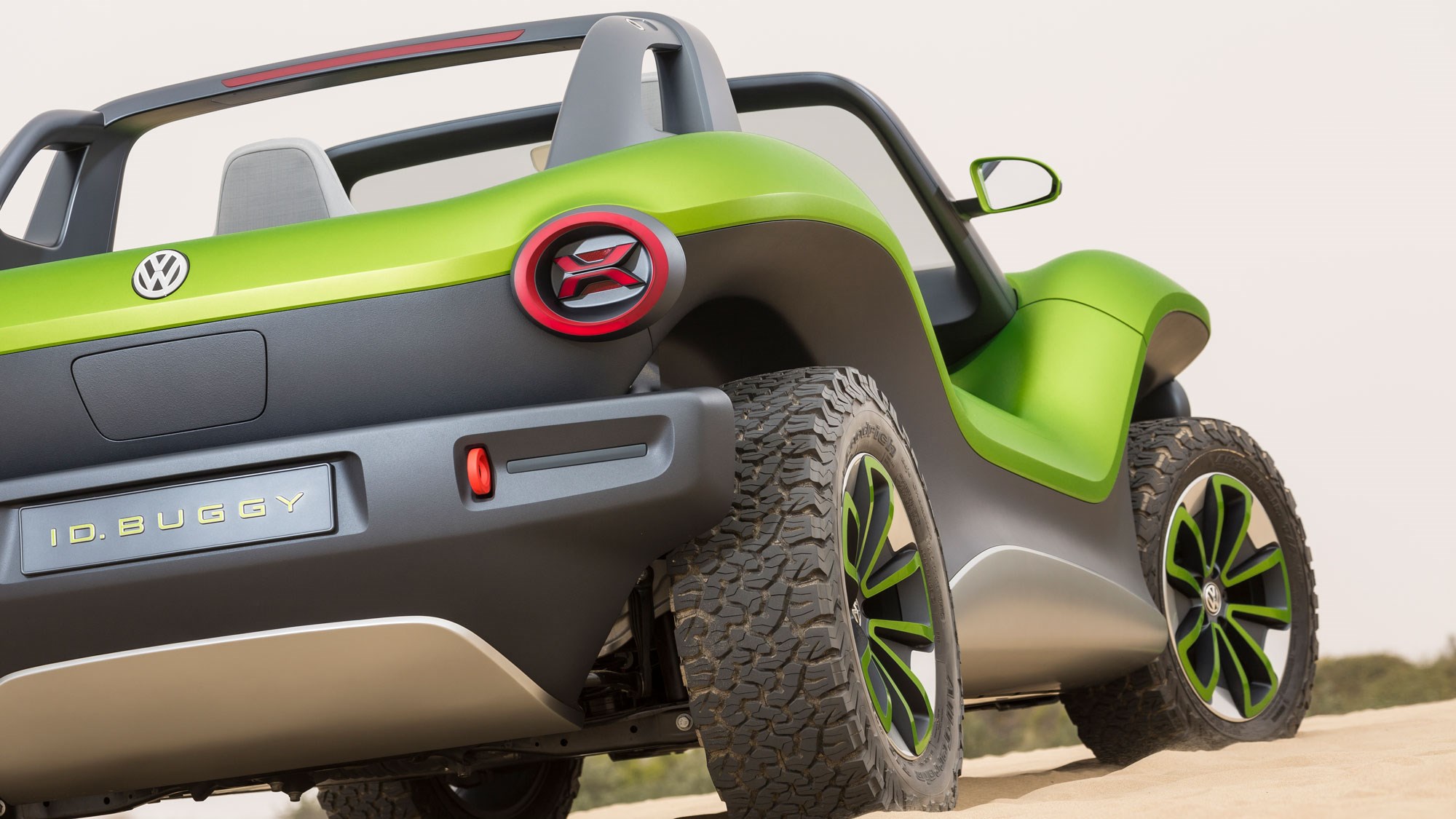
Since it´s still early days, the numbers related to the project are accordingly provisional. If one is to believe the Wolfsburg rumour mill, the target is to build between 10,000 and 20,000 units per year over a six to seven year timeframe. The rumoured base price of the ID Buggy is a tad below 25,000 Euro – that´s about 5000 Euro less than the entry-level ID3. Out in 2023 at the very earliest, the roofless and doorless Volkswagen would eventually become the sixth member of the MEB family.
Now that you know the official line, here is the unofficial game plan – let´s call it plan C. The C incidentally denotes the so-called 4C strategy. That´s C as in Cool, City, Commute and Cruise. Unlike plan B, C is based on a shortened MEB platform destined to cover the A0 (Polo) and A00 (sub-Polo) segments. This shortened components set has been an integral part of the MEB matrix almost from the beginning.
A person involved in the R&D process has the full story: “The first wave of MEB stretches from the footprint of a Golf to the dimensions of an Arteon – that´s from A to B+ in our terminology. Since an EV the size of a Golf is almost as roomy as the current Passat, it was clear that we had to downscale and take money out of this components set to prepare it for the two high-volume entry-level segments. The timing for plan C is still in a state of flux, but since this evolution is also mandatory for Seat and Skoda, model year 2024 looks like a realistic launch date.”
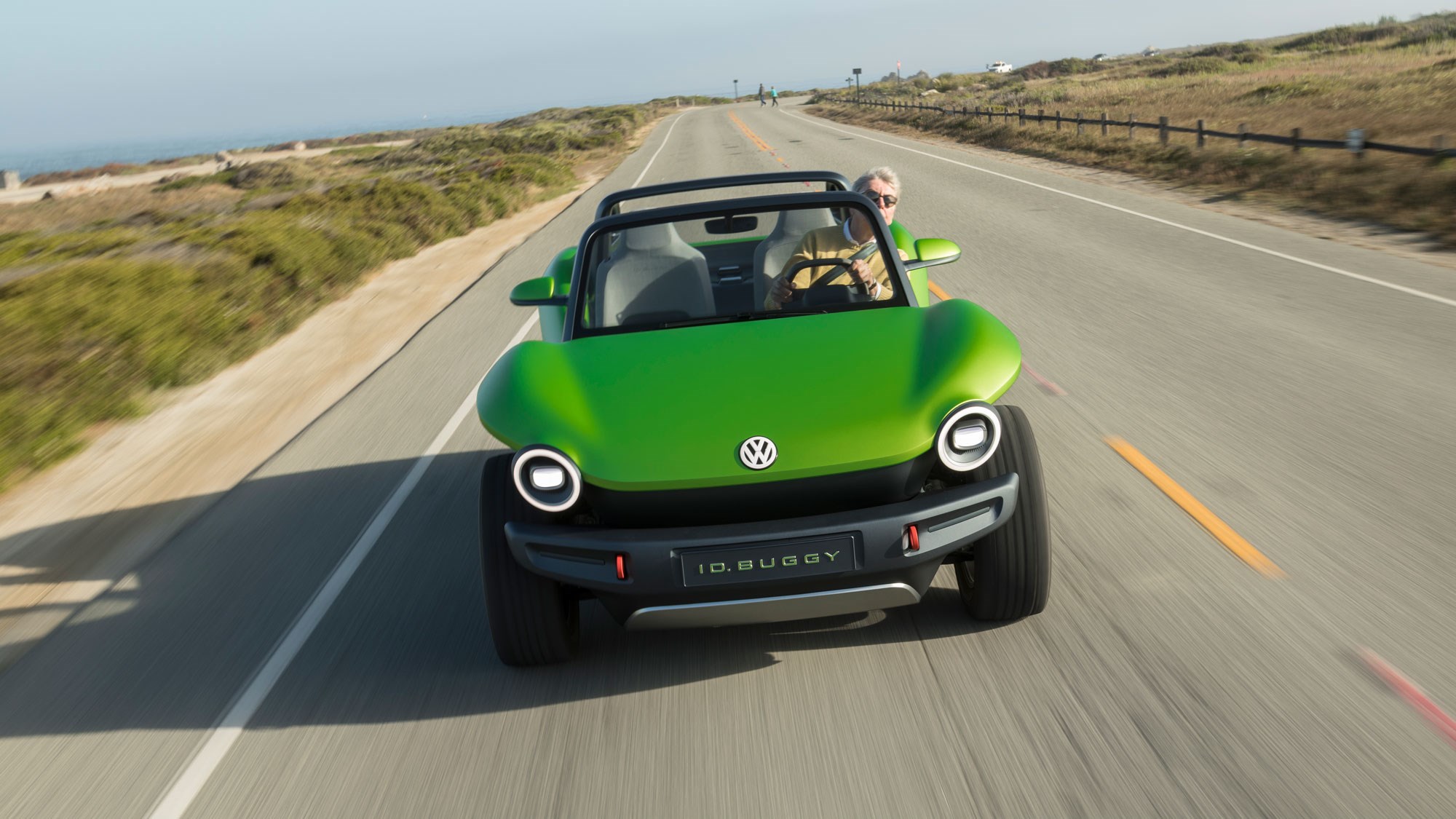
In the 4C scenario, cool would denote the Buggy, or in fact any other e-VW big on street cred. City is exactly that, namely a three-door box on wheels with maximum space utilization claiming minimum road space. Commute stands for a comfortable and convenient daily driver which can cover medium distances briskly and economically. Cruise is synonymous for an even longer range and higher average speeds all wrapped in a stylish low-drag body. So far, so good.<>
What makes the 4C proposal so special is the innovative modular architecture which mates a near-identical lower to four different uppers – not unlike the life-drive concept pioneered by the BMW i3. The 4C spin-offs would share the same swb chassis in combination with bespoke claddings, wheels, suspension set-ups and driveline calibrations. The upper – for cost reasons made of steel, not composites – would boast individual sheet metal treatments but use the same IP, MMI, connectivity, AV capability and digital DNA. In essence, the interior is allegedly a decontented version of the ID3.
Now you know the rest of the story.